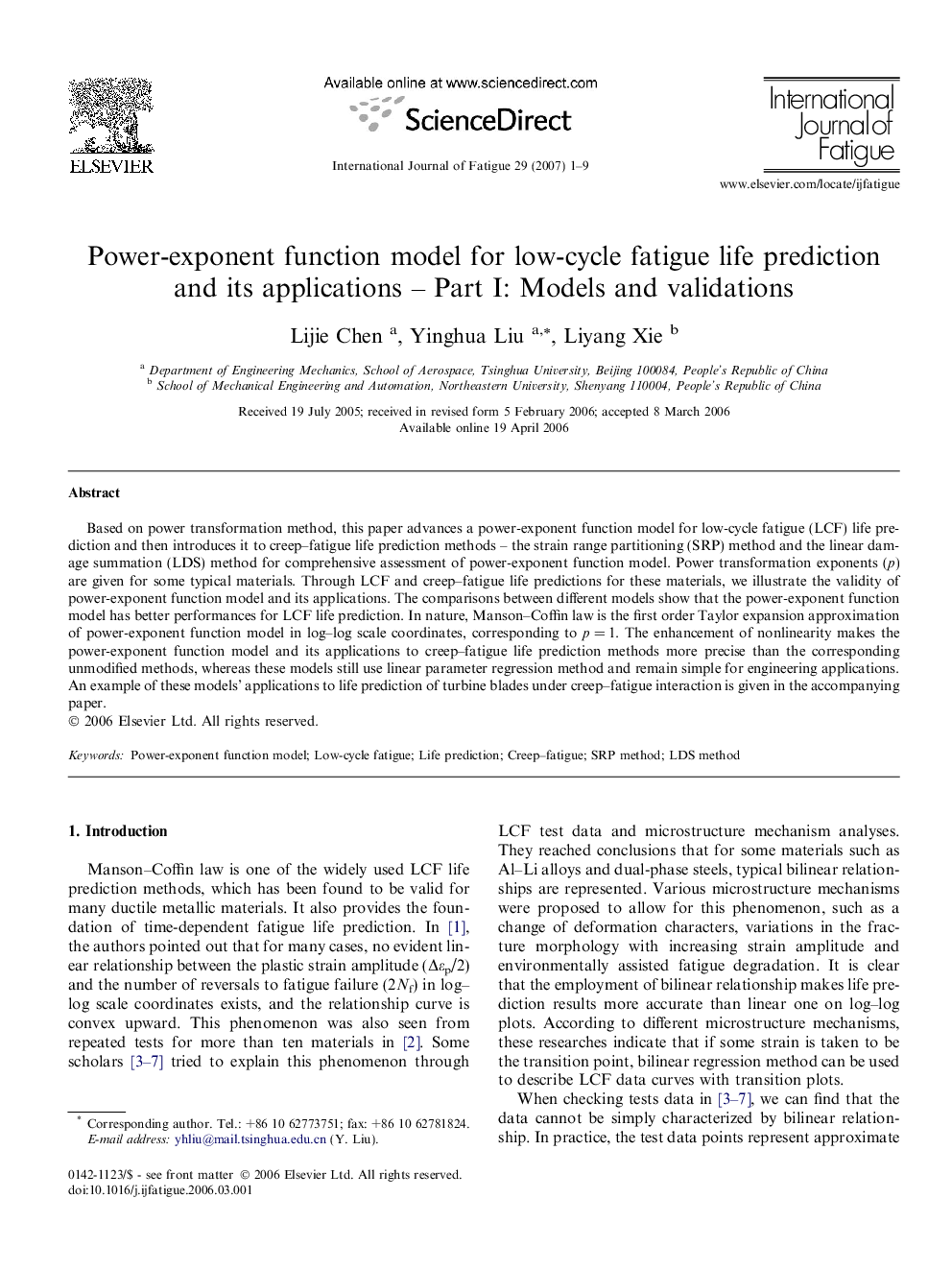| Article ID | Journal | Published Year | Pages | File Type |
|---|---|---|---|---|
| 777406 | International Journal of Fatigue | 2007 | 9 Pages |
Based on power transformation method, this paper advances a power-exponent function model for low-cycle fatigue (LCF) life prediction and then introduces it to creep–fatigue life prediction methods – the strain range partitioning (SRP) method and the linear damage summation (LDS) method for comprehensive assessment of power-exponent function model. Power transformation exponents (p) are given for some typical materials. Through LCF and creep–fatigue life predictions for these materials, we illustrate the validity of power-exponent function model and its applications. The comparisons between different models show that the power-exponent function model has better performances for LCF life prediction. In nature, Manson–Coffin law is the first order Taylor expansion approximation of power-exponent function model in log–log scale coordinates, corresponding to p = 1. The enhancement of nonlinearity makes the power-exponent function model and its applications to creep–fatigue life prediction methods more precise than the corresponding unmodified methods, whereas these models still use linear parameter regression method and remain simple for engineering applications. An example of these models’ applications to life prediction of turbine blades under creep–fatigue interaction is given in the accompanying paper.
